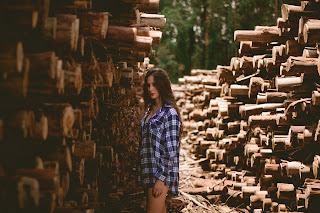MARKET FORMS OF TIMBER
The various market forms in which the timber is cut and sold are as follows:
1. Log
2. Deal
3. Baulk
4. Batten
5. Boards
6. Plank
7. End
8. Scantling
9. Pole
10. Post
11. Strips
12. Quartering or squares
1. Log:
It is the trunk of a timber tree obtained after the removal of branches etc.
2. Deal:
Deals are the sawn pieces of softwood with parallel sides, 50 mm to 100 mm thick and 200 mm to 250 mm wide.
3. Baulk:
It is a roughly squared timber piece, obtained by removing the bark and sapwood, The cross-sectional dimensions exceed 50 mm in one direction and 200 mm in another direction.
4. Batten:
These are the pieces of sawn timber whose breadth and thickness do not exceed 50 mm.
5. Boards:
It is a sawn piece or plank of timber with parallel sides, having a thickness less than 50 mm and width exceeding 200 mm.
6. Plank:
It is a long timber piece with parallel sides, having a thickness of less than 50 mm and width of more than 50 mm.
7. End:
This is a small piece of batten, deal, or scantling.
8. Scantling:
It is a timber piece whose breadth and thickness exceed 50 mm but is less than 200 mm in length. Scantlings are the pieces of the miscellaneous size of timber sawn out of a log.
9. Pole:
A pole or a spar is a long log of wood whose diameter does not exceed 200 mm.
10. Post:
It is around or rectangular wooden member, having a diameter or side less than 300 mm, and which is used in a vertical position for use as a compression member in buildings.
11. Strips:
These are wooden pieces having a thickness less than 50 mm and a width less than 100 mm.
12. Quartering or squares:
These are square pieces of timber, having sides 50 mm to 150 mm.
Also Watch :
Also Read: Prevention of timber
